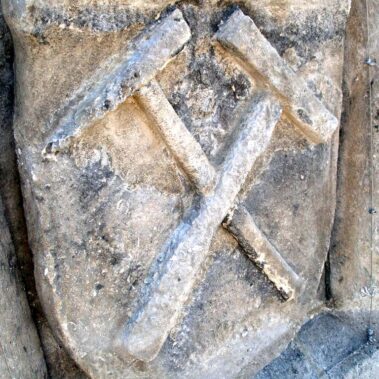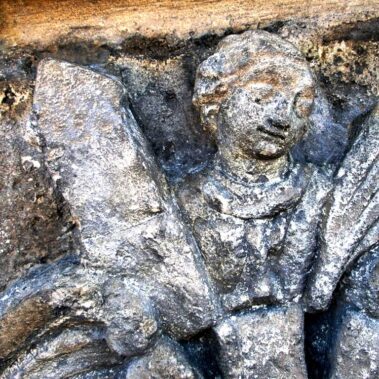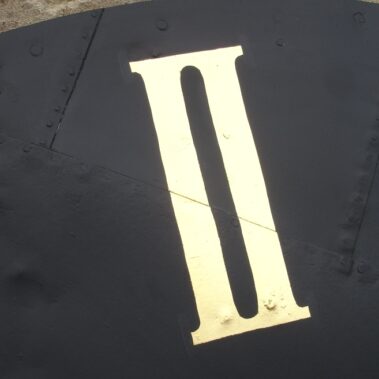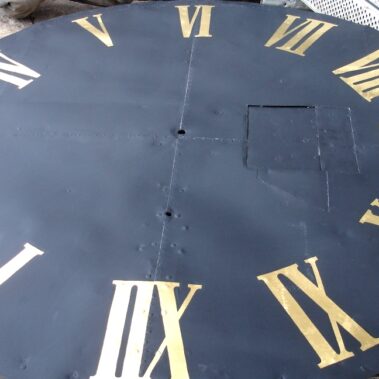Church of the Virgin Mary Na Náměti, Kutná Hora, Czech Republic

| Address: | Kostel Panny Marie Na Náměti, Na Náměti, 284 01 Kutná Hora |
|---|---|
| Description of work: | Restoration of the outer stone casing of the tower
Restoration of the shutters in the church tower Restoration of the tower clock of the church Restoration of the stone bas-reliefs on the west-facing facade of the tower |
| Contractor: | GEMA ART GROUP a.s. |
| Investor: | Office of the Arch Deanery, Kutná Hora |
| Implementation: | 05/2008 – 10/2011 |
The Church of the Virgin Mary Na Náměti was built on the site of an older chapel around 1357. The first written mention of the monument is from the beginning of the 15th century. The church is a three nave Gothic building with a characteristic square tower. The unusual name “Na Náměti” was given to the church because of the medieval ore markets which took place nearby. During sales of the silver ore minute amounts often ended up on the ground and were swept up at the end of the market day. These accumulated sweepings were called “náměť”, the value of them over time was high enough to finance the building of the new church that the denizens of Kutná Hora desired.
The building underwent a fundamental restructuring after a fire in 1470, when the current tower is believed to have been built and the roof cover renewed. Some parts of the interior then also acquired a new, late Gothic look. Between the years 1490 and 1514 the local master stonemason Blažej, the workshop of Matyáš Rejsek and stonemasons trained by Benedikt Rejt all took part in the rebuilding of the Church of the Virgin Mary Na Náměti.
Further important alterations took place in the years 1886 – 1887, when the church was given a Neo-gothic makeover: the main entrance portal of the tower and the stone bas-reliefs depicting the crests of the local miners’ guilds and the coat of arms with the initials of the Emperor Ferdinand III were added. The tower was also given a new Neo-gothic staircase.
During the 20th century, in the years between 1954 and 1958, the church underwent further extensive reconstruction. Later, in 2003, the roof covering was renovated and in May 2008 the restoration of the church tower commenced.
Restoration of the exterior of the Church of the Virgin Mary Na Náměti has been underway in several stages since May 2008. Completion of the restoration is expected by 31st October 2011. All restoration, craft and artisan and building work, including the supply of scaffolding and lifts, has been the task of the company GEMA ART GROUP a. s. During the stages concluded so far, the outer stone casing was renovated as well the stone bas-reliefs on the west-facing façade, and the window shutters and the tower clock restored. The stone outer casing, built mostly of Mušlov limestone, was severely disturbed by dirt deposits, gypsum crusts and also by vegetation (moss and lichens). The stone was also weatherworn. The window frame had cracks in the lintels, uprights and sills and in the tracery. The stone bas-reliefs in the west façade of the tower bearing the coat of arms with the initials of the Emperor Ferdinand III and the four crests of the mining guilds were extensively damaged and in a critical state. As a matter of course, chemical analysis of the samples taken had been carried out prior to any interventions. After the research the most considerate restoration methods were evaluated to ensure sensitive handling of any work on the monument. All interventions were first discussed with the Heritage Office. A technically demanding part of the work was the restoration of the clock faces from the tower clock, each measuring almost two meters in diameter and weighing a hundred kilos. The clock faces had to be dismantled from the tower and transported to a workshop.
Restoration of the shutters on the tower windows:
During the restoration of the exterior of the Church of the Virgin Mary Na Náměti it was also necessary to include the shutters on the tower windows. The shutters are made of oak and a system of pulleys moves the lower slats. Due to the constant exposure to the elements the shutters were in a very bad state. Up to one third of the slats was missing or damaged to such a degree that they had to be replaced. The pulleys were also broken.
The shutters were dismantled and individual parts cleaned. Damaged and missing slats were replaced by copies made from the same wood. Retained original parts were sanded. The defunct pulleys were replaced by a brand new mechanism. The wood was stained and colour retouched. Subsequently the wooden frames and shutters were impregnated with linseed oil and varnished. Finally, waxing was carried out.
Restoration of the outer stone casing of the tower:
The tower is built from Mušlov limestone. Before the work commenced, the stone casing was found to be in a very bad, and in places critical, state. The worst affected parts were on the south and the east side of the tower in the area of the blind arcades. The moulded piers were originally finished with figurative corbels or hanging keystones, very few of which survived. In may places gypsum crusts were found. In the worst shape were the windows and the window tracery on the fourth floor, where the cut in the broken arch was damaged in several places. In the upper part above the windows several millimetres wide cracks caused by instability were found. The pointing of the wall was in places entirely washed out or replaced with an unsuitable cement mortar. The stone casing was in many places soiled by pigeon droppings, dirt deposits, moss and lichens.
The actual restoration was preceded by detailed research and photo documentation. During the research samples were taken for analysis and stratigraphy testing, the results of which led to the selection of the most sensitive restoration methods. The surface of the stone was first cleaned by steam jet and the gypsum crusts were removed using nylon brushes, scalpels, restoration chisels and sandpaper.
Afterwards the pre-consolidation of the most damaged parts of the stone was carried out using a silicon acid preparation. Defects in the stone casing were repaired using a mineral base filler. Where large portions of the stone were missing, inserts were put in place. To achieve visual harmony, a suitable glaze was used. Finally, the surface was given a preventative treatment by a hydrophobic agent.
Restoration of the stone bas-reliefs on the west façade of the tower:
This concerned the stone coat of arm and crests located under the ledge of the west façade. The former is a shield with the initial of the Emperor Ferdinand III (1637-1657). The shield bears a crested letter “F” with the Bohemian Lion and the Imperial Eagle as supporters. The surface of the stone was weatherworn with a significant crack. Under the coat of arms with the initial of the Emperor are four guild crests, all of which were in a critical state. Parts of the surface were missing or seriously degenerated by cracks and gypsum crusts. After restoration research, sampling for chemical analysis and documentation the actual restoration was undertaken. The surface was cleaned using a steam jet. Gypsum crusts were removed mechanically using scalpels. The stone was fortified by a silicon acid preparation, in depth strengthening was carried out by experts using infusion tubes. Some components of the guild crests were partially torn off. Where that was case the parts were carefully removed, cleaned, in depth consolidated and re-attached. Where the damage was more extensive, the parts were re-attached using stainless steel bolts. Where required, mineral based fillers were used. In the final stage the surface of the bas-reliefs was treated by a hydrophobic agent. During the chemical analysis it was found that the surface of the coat of arms with the initials of the Emperor Ferdinand III had originally been polychromatic and gilded but this was omitted during restoration.
Restoration of the church clock and the brass gongs:
This is a clock with four faces attached to the church tower. The clock faces made from sheet steel, the hands, the brass gongs and the mechanisms connected with the faces were all subject of restoration, but not the actual clock works.
Dismantling of the clock faces, due to their weight of a hundred kilograms each, was very challenging. After loosening up of the faces from their stone settings the faces were lowered by a lift built into the scaffolding. The surface of the faces was covered by a cracked matt lead-tetroxide based paint. Some part were corroded, especially at the back of the clock faces. The rust was mechanically removed using brushes and scrapers. The gilded Roman numerals at the front were removed and the whole surface re-polished. Subsequently the surface was painted with an undercoat and then with a black matt paint containing graphite. The clock hands were treated similarly. The gilding was renovated using gold leaf.
The brass gongs and steel mechanisms were first cleaned, and the steel parts were also treated with tannate. Patina was applied to the surface, which was then treated with microcrystalline wax.
Otevírací doba kostela:
so – ne 10: 00 – 17:00
Vstupné je dobrovolné.
V kostele Panny Marie Na Náměti se konají pravidelné bohoslužby, a to každou neděli v 18: 00 hod.





























